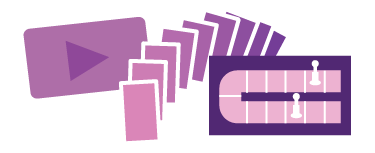Accelerating positive change for organizations, their people, and the world is a team effort. When clients and XPLANE come together, your vision comes into focus. Here’s how we do it.
At XPLANE, we accelerate positive change for people, organizations, and the world.
This mission is simple yet bold—and potential clients are naturally curious how we accomplish the work of organizational transformation.
In a recent blog post, we shared a bit about how our approach yields outsized transformation results. Here, we’d like to break down how we structure our engagements—and explain what’s needed from you—to bring transformational results to life.
The Team
The first component of our approach is our unique team structure.
Designing and accelerating change demands a multidisciplinary team—rather than an individual consultant—to bring diverse strengths and perspectives to any project. This enables us to learn and iterate quickly, execute efficiently, and maximize insights.
A typical XPLANE team consists of three professionals, each with different roles:

- Engagement Designer: Our program managers are the backbone of our project teams. We consider them to be engagement designers because they manage logistics, keep the team coordinated and aligned, and plan next steps to keep us moving full-steam ahead. In other words, they keep the trains on time and on the rails.
- Experience Designer: Our consultants are facilitators of discovery. They are experts at extracting information, ideas, and insights from client teams. We call them experience designers because they design engaging and memorable work sessions that organize and synthesize information into meaningful insights, messages, and narratives.
- Information Designer: Our information designers are the translators of your story. They are highly skilled at crafting ideas and insights that emerge from the discovery phase (more about this below) into compelling visual narratives that resonate and inspire.
By using a sprint-based, iterative approach and grounding our work in people-centered design, visual thinking, and co-creation, our teams are able to rapidly understand your needs, work collaboratively with you to develop meaningful solutions, and communicate complex ideas in ways that are easy for people throughout your organization to understand.
The Discovery
The second component of our sprint-based approach starts with critical, team-based discovery work.
Depending on the scope of your project, this work might consist of a couple of two-hour remote sessions or two days in person with your team. We work with you to rightsize the approach that will make wise use of your time and propel your organization forward.
Finding team time for workshops can be a big lift, so we intentionally design our engagements to ensure time is valuably spent and impactful. Our clients give feedback that our sessions are fun and memorable and that their teams feel more connected afterward. But they aren’t just feel-good sessions; they yield outsized results and insights.
While agendas for our workshops are unique, they always adhere to the principles of our approach—visual thinking, people-centered design, and co-creation. We make sure to include the perspectives of both the people driving change and those impacted by the change. We design activities that visualize information so participants can effectively align with key ideas and insights. And we emphasize collaboration and co-creation heavily so there is a constant loop of feedback and iteration throughout the experience.
The result? A naturally interactive, engaging, and productive workshop that provides clarity and alignment on the path forward. Teams come away with new insights and understandings as well as the key themes, critical narratives, and foundational structure for succinctly visualizing where you’re headed.
The Deliverable
After discovery, the final component of our approach is the visualization phase. Creating a visual is the next step in team alignment AND a critical step in producing an impactful communication tool.
This stage involves a series of review sessions with key stakeholders (typically a subgroup of workshop participants). Depending on the number of revisions needed, this usually requires a handful of feedback sessions over the course of a few weeks.
Visualizing where you want to go has several important benefits:
- Alignment on key elements: When you can see what’s important or what other people think is important, conversations are more productive.
- Clarity on strategy: Seeing and deciding what goes on the page helps you hone your strategy and emphasize critical components.
- Everyone gets on the same page: Visualizing the relationships and the narrative is much easier when you can see the connections.
Three Visual Concepts
In this stage, we begin by developing two to three visual concepts—a concept sketch, a blueprint, and the final illustration—each of which synthesizes the ideas and feedback of workshop participants.
A concept sketch is a rough sketch of what the visual deliverable could look like. It seeks to identify and articulate relationships, distill insights and strategic themes, and build a cohesive narrative.
At this stage, the level of fidelity and detail is low—imagine sketching an idea on a napkin.
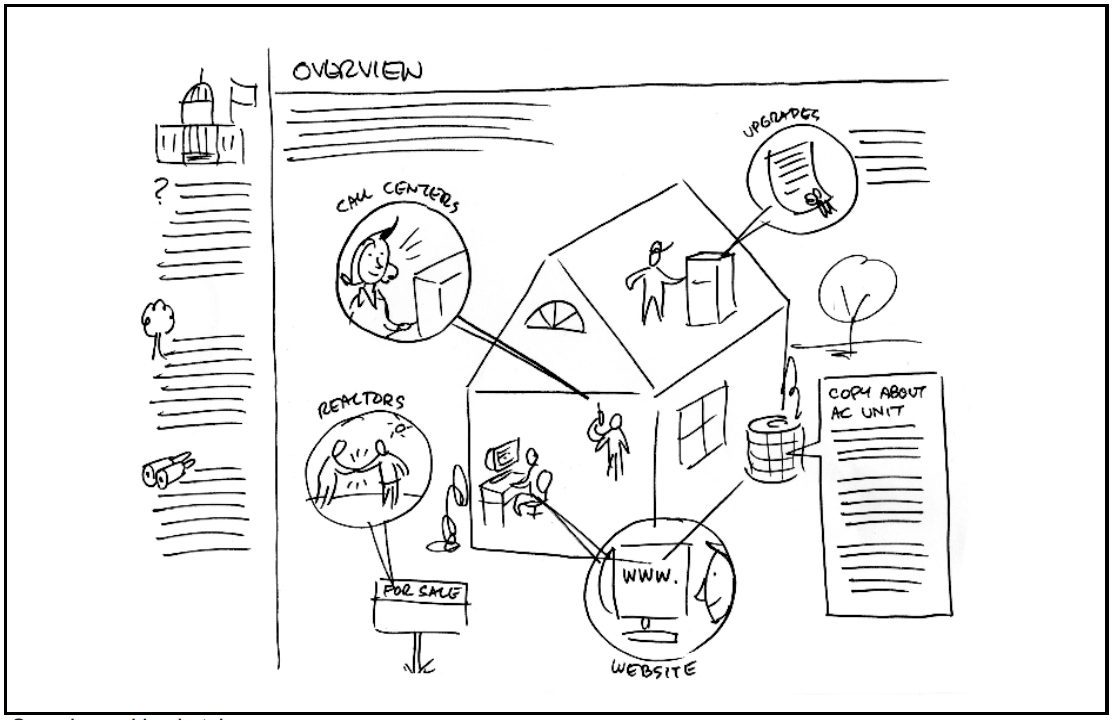
Once a concept is selected, we develop a more detailed version called a blueprint. This is a higher-fidelity visual representation and is the stage at which text is developed.
The draft blueprint goes through one or two iterations until all text is final and all elements are in the right spaces and are the right size.
Throughout this process, the client is intimately involved, offering feedback so the right information is incorporated.
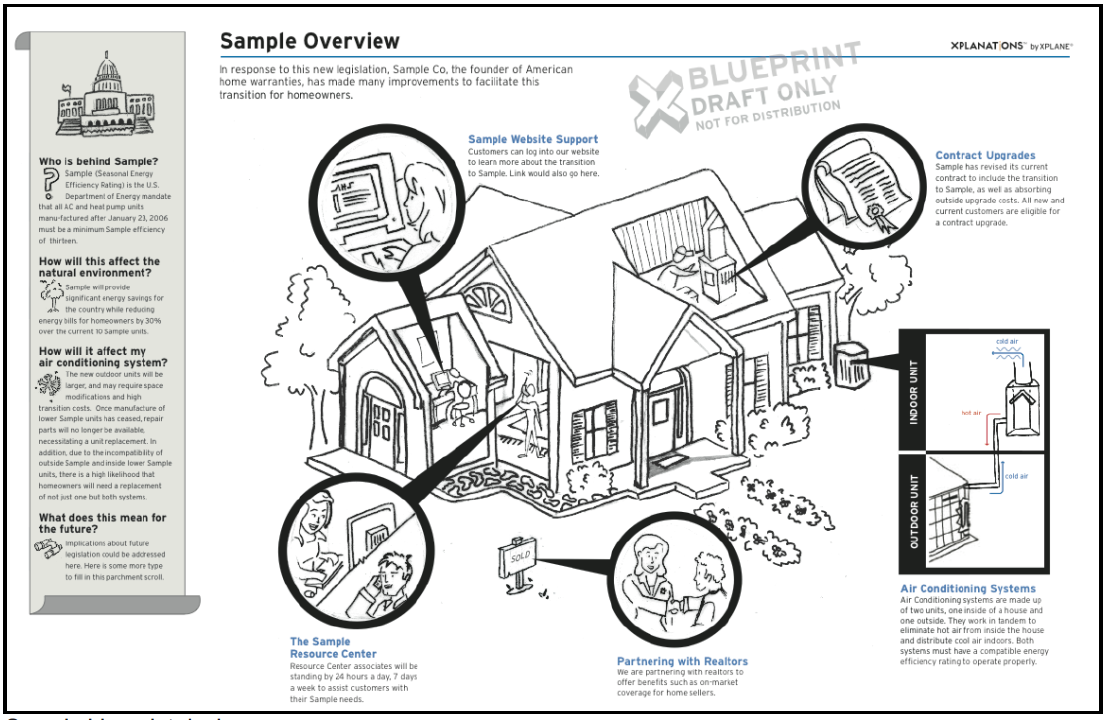
The final step is illustration. This is where we put the polish on and ensure the visual reflects your brand look and feel.
Unlike the generic versions we’re using here to illustrate the process, your final version will feel unique and will reflect your needs, aesthetic, and message.
The resulting deliverable is a powerful way to convey complex relationships and map out where you want to go. It provides a memorable way to navigate the intricacies of a vision, strategy, or change effort. You can easily see relationships and hierarchy.
We call this a “visual map,” and it gives your team a way to communicate a consistent message or story. And because of our co-creative process, you and your team are already underway in generating buy-in, since people who help build a solution buy into the solution more readily.
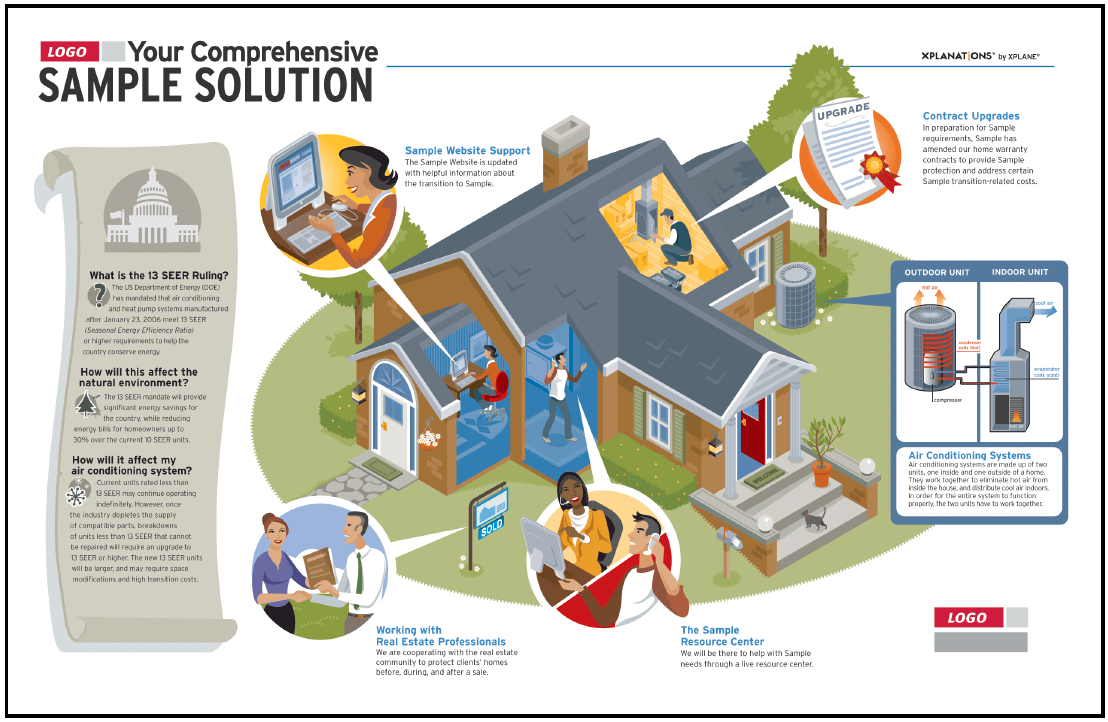
What We Can Do For You
Whether you’re looking to articulate a vision, clarify a strategy, generate greater customer centricity, improve employee experience, or spearhead any other change effort, we can tailor an approach that will propel you toward your future vision.
Here are a few ways we can help; we’d be happy to discuss these or any need you might have. Let’s talk about your goals and possible solutions!

Vision Alignment Sprint
Create and clarify your vision for the future, and visualize it so employees and stakeholders see it, get aligned, and can move forward together.

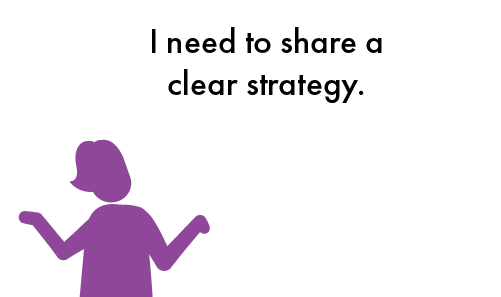
Strategy Development Sprint
Define or refine your strategy in a way that your organization can easily understand, and develop a visualization and a common narrative to equip leaders to share the story consistently.

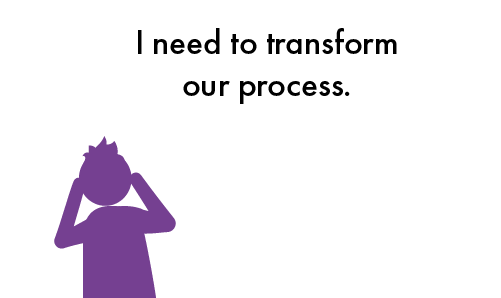
Service Design Sprint
Map your current state stakeholder journey, identify gaps and opportunities, define the ideal future state, and develop a prioritized roadmap to achieve it.
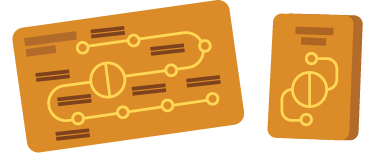
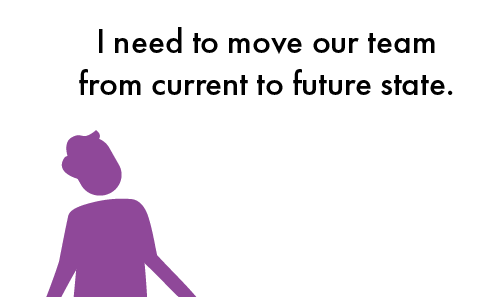
Activation Planning Sprint
Design and craft a change campaign plan and roadmap to ensure your vision, strategy, or transformation effort takes hold and accelerates the result you want.

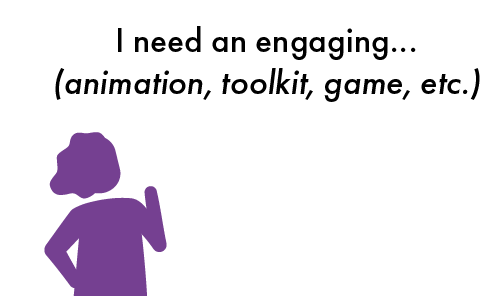
Engagement Tool Fabrication
Design bespoke artifacts as communication and learning aids. Create a replicable experience utilizing card decks, games, events, etc. to accelerate understanding, apply new knowledge, and increase buy-in.
